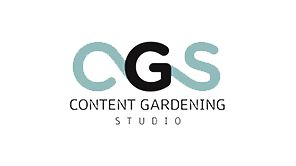You probably know WordPress as one of the most popular blogging and web publication systems in the world. However, are you really aware of all the possibilities and the power that this CMS offers? Indeed, this content management system has improved dramatically over the years, and the number of large-scale websites using it is constantly growing.
To prove the efficiency of this system, statistics reveal that in March 2021, WordPress hosted 40% of all websites on the web. Thus, compared to the 32% observed 3 years ago, there is no doubt that the growth of this CMS is not weakening.
But before going further, let’s clarify the concept of a “large-scale website”.
What is a large-scale website?
A website is said to be large-scale when it meets certain characteristics that include a high number of visitors, a high number of transactions if it is an online shop, or a large amount of published data. To be perfectly clear, a website with a million weekly visitors can be called a large-scale website.
However, does WordPress have any limitations when it comes to scaling? And do the rules of this CMS vary from one website to another? Let’s discuss these questions through the “5 points” to consider when running a large-scale website.
Choosing the right hosting
The infrastructure related to the hosting of the site plays the most important role in scaling up. For various technical reasons, good hosting can continuously improve the performance of your site.
On the other hand, we do not recommend a host that imposes limits on the use of server space. Spend time to find out which hosting partner is best for your project. Among the types of hosting offered by companies, there are a few that can be used for large-scale projects. Let’s introduce them here.
VPS or Virtual Private Server: VPS hosting can be used for medium- to large-scale projects. This type of hosting has an edge over shared hosting and dedicated WordPress hosting, which we’ll talk about next, because it provides a unique space for each project on the server and keeps your data separate from other users. However, while it is a great choice in terms of customization options and storage space, VPS hosting can have problems with high traffic levels and spikes. If you decide to go with VPS hosting, make sure it offers plenty of resources and scaling options in case your site experiences increased demand.
Dedicated WordPress hosting: First and foremost, using this type of hosting requires some advanced skills in server administration and maintenance; it involves renting a server yourself, allowing you to have full root and administrator access to everything. Although everything is under your control, this degree of control sometimes comes at a price: dedicated hosting is one of the most expensive hosting options.
This option is clearly suitable for projects where you need complete control of the server and where you have the necessary technical expertise.
Cloud hosting: This type of hosting involves several machines working together to provide a cloud infrastructure. Since the website and its infrastructure run on combined computing resources, this type of hosting is very good for scaling your project. Cloud hosting allows you to increase the resources of your project with a few actions or even a single click. In addition, the website owner only pays for the resources that are used, and there is rarely a fixed price. Finally, with cloud hosting, since the resources are spread over many servers, the downtime of the project is reduced to almost zero.
Managed hosting: This type of hosting does not rely on its own infrastructure but instead provides hardware and software configuration, maintenance, and technical support for large-scale third-party hosting providers. It is basically a simplified version of dedicated hosting, but here a properly configured server can handle high-level traffic peaks.

Hosting WordPress
Performance management and optimization
In all respects, it is clear that large-scale websites need to be optimized much more than occasional blogs or small marketing presentation websites. And in terms of website optimization, every detail counts. There are a number of things that one needs to check and work on, including:
- Making sure the software is updated
- Optimizing the background process
- Using a CDN (Content Delivery Network)
- Using optimized themes
- Choosing faster plugins
- Avoiding storing media files on WordPress
Better cache management
The WordPress cache is a feature that temporarily stores data in the server’s memory (RAM) to reduce the amount of time it takes for the website’s pages to load. For large-scale sites, your server may have trouble serving requests from all users. This is where caching comes into play. Downloading, installing and enabling a caching plugin will speed up the loading speed of your site by 2.5X and 5X.
By searching on the web market, you will find a multitude of great caching solutions. Some popular ones are:
- W3 total cache
- WP Cache
- WP Rocket

Plugin WordPress
Optimizing the database
The database used by the website, usually run by the MySQL (or MariaDB) system, is where most of the website data is stored and accessed. This data can be classified into two parts: “important” data and “temporary” data (revisions, spam comments, logs, recycle bin, etc.). The latter is often not needed to be kept for a long time and is regularly deleted. As a consequence, if you do not optimize the database, it becomes slow over time, which makes the website pages slow to load.
You can use the phpMyAdmin administration tool to optimize your database. To do that, select all your tables and then choose the “optimize table” option from the drop-down list menu of the tool. With this action, the selected tables are recreated by removing any excess local data.
There are also slightly less restrictive methods of optimizing your database using WordPress plugins such as WP-Optimizer, WP-Sweep, WP Cleaner Optimizer, or WP Cleaner Pro.
Managing security settings
Although WordPress is a highly secure environment, many external factors can undermine the security of your website, such as outdated server software, outdated WordPress plugins and kernel, or poor server administration. So, to maintain a high level of security for your site, it is important to:
- Keep WordPress up-to-date
- Ensure high security standards for passwords and user authorization
- Backup WordPress using a good backup tool
- Use WordPress security plugins
- Enable Web Application Firewall (WAF)
- Use secure protocols (SSL/HTTPS)
- Limit connections
- Use two-factor authentication for access to your admin account
As we said at the beginning, WordPress is a powerful CMS with many possibilities. It can be used to build web applications ranging from the simplest to the most sophisticated. On the other hand, it is important to follow a number of rules and techniques to optimize your website and keep it performing at its best.
If you need help in WordPress web development and optimization, contact us!


